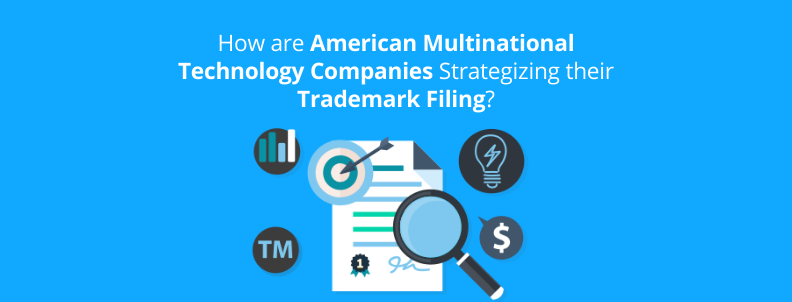Companies like Apple and Google strategizing their trademark filings isn’t a news flash, right? But today we’re going a step deeper into the making of these trademark strategies and explore the one that has left us the most astound- Google’s Tongan shell diversion. However, before we get to it, it’s important to know if a trademark filing strategy is even required?
Why do you need trademark filing strategies?
In many countries including the US, categories of IP such as trademarks are public information. As a result, as soon as a company files for the trademark, it comes in public and thus becomes available to everyone.
This becomes a huge opportunity for a number of brand-savvy consumers who are always on the lookout for knowing and being the first one to spread the word about what new features or tech their favorite brand is bringing in their next product. And for that, they scour through every shred of information available this includes patents and trademark databases as well. For example, a recently filed trademark by Apple has got so many people foretelling that the next Apple Watch might have a blood pressure monitor. Now, the disclosure of such information can harm the competitive position of the company. In addition, the trademarks and filings not yet assigned to an actual product give a potential glimpse into what the company has in development.
Consequently, this type of information in a competitor’s hands can help them a lot in timing their own product. Thus, trademark filing, as well as enforcement strategies, have become an essential part of firms’ competitive strategies.
More strategic competitors can get trademark+patent landscape done to strengthen predictions about upcoming features in their competitor’s products early on. (More on making strong predictions from IP here.)
Now that we know how important it is to have a strategy, let’s see how the major tech companies hide their trademark filings while they are still a part of the public record?
A trademark filing strategy: The Kingdom of Tonga
To steer clear of an early reveal of their technology, companies have become increasingly tactical, as a result, they are finding ways to hide their IP filings using other shell companies and clever trademark filing strategies.
Today we are going to talk about one such strategy by Apple and Google of filing a trademark in lesser-known countries before bringing out their iconic products.
Intrigued? Then, let’s move to it.
“The kingdom of Tonga”, are you familiar with the name?
I for one had never heard about this country before. This kingdom is a group of islands in Oceania. Moreover, it comprises 169 islands! And one of the 3 major island groups is called Tongatapu. (Notice the Hindi reference here?)
Here’s a fun fact about this country: It is a favorite of Google’s IP department!
Now, why would that be?
Fortunately, a section in the trademark act relies on an international treaty where a foreign application can be used to prove the priority filing date. This means that the companies can file early in a foreign country, without an immediate disclosure of their innovation to the public.
Here’s what the section says (you can skip the following paragraph if the legal language doesn’t interest you)-
Section 44(d) [§ 1126(d)] of Lanham Act provides for a priority filing date to applicants (see TMEP §1002.02) who have filed an application in a treaty country as defined by §44(b) (see TMEP §1002.03). This means if a company files the U.S. application claiming §44(d) priority within six months of filing the first application to register the mark in a treaty country, the filing date of the first-filed foreign application is the effective filing date of the U.S. application.
How does Google use its Tongan Shell Diversion for trademark filing?
Speaking of foreign applications, of all the countries that are party to this international treaty that provides a right of priority to U.S. nationals, Tonga is one of those rare countries whose intellectual property organization does NOT make its trademark application information available online. Yes, you got that right, if you search the internet for any information on the trademark applications filed in the Registry and Intellectual Property Office of Tonga, you won’t find it!
As a result, it is considerably difficult for anyone to discover the application, and make guesses on what the companies are bringing in the market next thus making it easier for the company to maintain a competitive edge in the market.
Google, leveraged this Tongan ‘privilege’ before launching its cloud gaming platform Google Stadia last year. The first trademark application for STADIA was filed in Tonga in March 2019, before being filed in the US or any other primary market. Seven months later, it was launched on the 19th of November and was instinctively considered one of the front-runners in cloud gaming because, of course, it’s Google!
Microsoft has been a front runner in the field of cloud gaming too. X-cloud, Microsoft’s cloud gaming platform was initially released in beta testing in the same month as STADIA’s launch. Later, the service was launched for subscribers of Xbox Game Pass Ultimate on September 15, 2020.
Lots of TM being filed, at least as first, in non-US jurisdictions for, presumably, stealth. E.G. Google STADIA mark first filed in Tonga.
Marc Whipple – Legal Inspiration! (@legalinspire) October 22, 2020
Apple, too, files its first trademarks in other countries that are part of the international treaty.
On further research, we found out that Apple has been using this strategy of filing the first trademarks of its products in distant lands, rather than the US for some time now. In addition, the trademarks are sometimes under the name of shell companies. Given below are a few examples-
Malaysia
The first trademark for MacBook was filed in Malaysia, and not the US! The product came out 9 months later.

Later, the company filed to protect MacPro or Mac Pro in New Zealand in November 2005. At this time Apple was in the middle of moving its computer line from running on PowerPC chips made by IBM and Freescale Semiconductor to processors made by Intel.
Jamaica
The first trademark for AirPods was filed in Jamaica and also under a different owner’s name! Further, the product came out one-and-a-half years later.

Some other names where Apple keeps the potential name of a new product for the U.S. market under wraps until it officially unveils the product include Trinidad and Tobago, New Zealand, Hong Kong, and Switzerland.
Thus, we believe that this strategy might be helping Apple in protecting its product names and research strategy. So that it is not revealed to the public or its competitors until the product is ready to be launched.
Seeing this, we looked for other countries that are a part of the international treaty. Turns out there are quite a few. Of these, some do not have a website or an online presence, or if they do have a website for trademarks, they skip out some details of the mark, like the Applicant’s name. The table below lists a few of them-
| Country | Link to Patent/Trademark Office |
| Jamaica | https://www.jipo.gov.jm/ |
| Brazil | http://excelmarcas.com.br/english/servicos-marcas/ |
| Andorra | https://www.ompa.ad/en/trademarks |
| Bangladesh | http://www.dpdt.gov.bd/ |
| Costa Rica | http://www.registronacional.go.cr/industrial_property/index.htm |
Conclusion
This article highlights tech giants as apparent users of this strategy. However, we believe anyone with the legal and financial resources can take great advantage of this strategy.
This was one of the many trademark filing strategies adopted by the companies. When you are working with the aim ‘if it exists, we’ll find it’, your searching skills take the better of you. And so, we dive into the nooks and corners to find strategic insights.
Want us to find similar strategies that your competitors use or some loopholes that can be of use to you?

Authored by: Priya Vashishth, Landscape, and Nidhi, Market Research.




